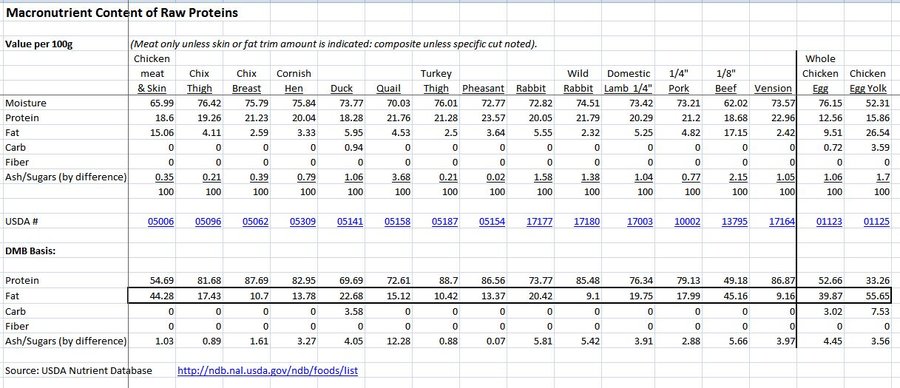That's not correct. It does.Rabbit meat doesn't contain enough taurine, remember?
But it goes to show how grinding, storage, or bacteria can affect the nutritional content of food. They're not sure what the problem was.
For those that don't know, a UC Davis study was conducted with the intent to analyze impact of raw diets on IBD. I don't know what genius decided that just ONE protein should be fed, but they wanted to develop a "gold standard" raw diet.
http://www.vetmed.ucdavis.edu/ccah/local-assets/pdfs/Role_of_diet_feline health_Glasgow.pdf
How could a wild type diet result in taurine deficiency? The raw rabbit diet we fed contained the minimal requirement of taurine and was therefore not considered deficient for a highly digestible diet. However, the amount of taurine available to the cat in a diet depends on a number of factors, such as the amount of protein, the quality of the protein, whether the diet is cooked or raw, and what other ingredients are present in the diet that might increase the amount of taurine needed (Backus et al., 1998) (Park et al, 1999). It is also possible that bacteria in the carcass of the ground rabbits or in the intestine of the cats broke down some of the taurine. Neither of these circumstances would be detrimental to diets containing excess levels of taurine, but would be detrimental if the diet was borderline deficient. Vitamin E levels in our raw rabbit diet were low and this can cause the meat to lose taurine as it is processed and ground (Lambert et al., 2001).
I've never seen anywhere that recommends just 80/10/5/5 without eggs or sardines. The 80/10/5/5 diet provides no vitamin D. Many people when casually discussing raw diets talk about just 80/10/5/5 not needing supplements - but when questioned further on the topic state that they don't consider eggs or sardines "supplements," simply part of the balanced prey model raw diet.I've always had the impression that you could feed exactly just 80/10/5/5 and that was complete. Some people recommend other supplements, sure, but they were only suggestions. I remember when I started at this forum/another cat forum that plenty of times it was recommended 80/10/5/5 only. It was only in the past year or less that sardines or eggs were more strongly recommended.
http://www.catinfo.org/?link=makingcatfood#The_RecipeI read through Dr Pierson's recipes and didn't see liver anywhere.
3 pounds of poultry thigh meat/bones/skin
or
2.25 lbs of whole carcass ground rabbit + 0.75 lbs of boneless chicken or turkey meat/skin/fat (see reasons above):
1 cup water (or, preferably, more if your cat will eat it with more water)
2 eggs - use the yolk raw but lightly cook the white
5000 mg fish oil (a good source of essential fatty acids - note that this is increased from the original amount of 2,000 mg - if your cat does not like fish, it is ok to use only 2,000 mg) Do NOT use cod liver oil!
400 IU (268 mg) Vitamin E (powdered E in capsules is the easiest to use)
50 mg Vitamin B-complex (capsules or tablets)
2,000 mg taurine (use powdered - either in capsules or loose)
3/4 tsp Morton Lite salt with iodine when using chicken but not when using rabbit (contains potassium and sodium - make sure that it contains iodine - see below for further explanation.)
For people living outside of the United States who cannot source Morton Lite Salt with iodine, use 1/2 tsp of regular salt (sodium chloride) with iodine.
Liver - If using ground rabbit (which includes liver) from wholefoods4pets.com, do not add additional liver. If using chicken legs, thighs or a whole chicken carcass minus the organs, add 4 ounces of chicken livers per 3 lb of meat/bones/skin.
Ingredients/recipe continued....
Last edited:









 , he'd need, at minimum, 56.8 IU a day. Even one egg yolk a day wouldn't give enough of it. So where do wild cats get enough vitamin D? I don't know! :dk: Unless they live somewhere with a good sardine supply :lol3:.
, he'd need, at minimum, 56.8 IU a day. Even one egg yolk a day wouldn't give enough of it. So where do wild cats get enough vitamin D? I don't know! :dk: Unless they live somewhere with a good sardine supply :lol3:.






